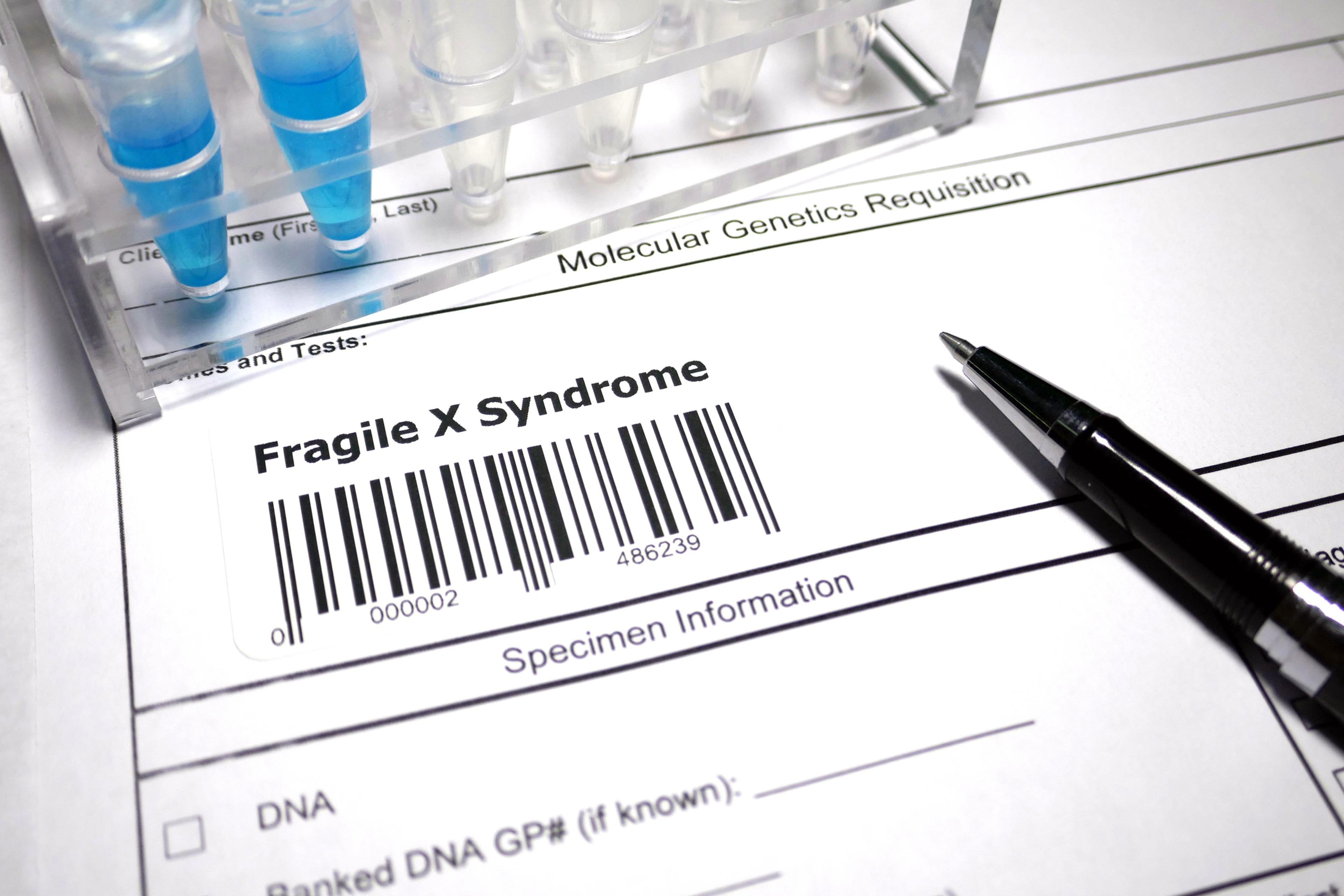
Fragile X Syndrome (FXS) is a heritable genetic syndrome that is a common cause of intellectual disability and occurs when the gene that makes a protein that is crucial for brain development shuts down. This gene is known as the Fragile X Messenger Ribonucleoprotein 1 (FMR1).
Developmental delays, learning and behavioral issues, physical abnormalities, autism spectrum disorder and many other issues can occur when this gene – located on the X chromosome – shuts down.
FXS affects both males and females, but females often have milder symptoms than males. It is estimated that about 1 in 7,000 males & about 1 in 11,000 females have FXS, according to the Centers for Disease Control and Prevention (CDC). FXS is not considered life-threatening.
Signs and Symptoms of FXS
- Signs of FXS become easier to recognize as a personages but can be hard to detect in babies and young children. Primary physical signs include:
- A long face, large prominent ears, flat feet
- Enlarged testicles in males, post puberty.
- Hyperextensible joints, especially fingers
- Low muscle tone
According to the CDC, these are the behavioral signs of FXS:
- Developmental delays, like not sitting, walking, or talking at the same time as other children the same age.
- Learning disabilities, including trouble learning new skills.
- Social and behavior problems, such as not making eye contact, anxiety, trouble paying attention, hand flapping, acting and speaking without thinking, and being very active.
Males who have FXS usually have some degree of intellectual disability that can range from mild to severe. Females with FXS can have normal intelligence or some degree of intellectual disability.
FXS and Autism
Autism spectrum disorder (ASD) occurs more frequently in people with FXS. Close to 46% of males and 16% of females with FXS also have autism, according to the CDC. Most boys and some girls have some symptoms of autism, but many are sociable and interested in other people. The difference between the two disorders lies in the diagnosis, as Fragile X is diagnosed through blood tests, which can be ordered by a doctor or genetic counselor. Testing also can be done to find changes in the FMR1 gene that can lead to fragile X-associated disorders.
Autism, meanwhile, is diagnosed based on a child’s developmental history and behavior, usually at the time of a child’s 18 or 24-month well-child checkup.
Treatment for FXS
FXS is uncurable, but treatment services that can help people learn important skills are available. They include occupational therapy, physical therapy, and speech therapy. Additionally, medication is available to manage symptoms and issues, such as behavior problems.
To develop the best treatment plan, people with FXS, parents should work closely with their health care providers, as well as everyone involved in treatment and support; this may include teachers, coaches, therapists, and other family members. Taking advantage of all the resources available will help guide success.
Photo credit: Getty Images





